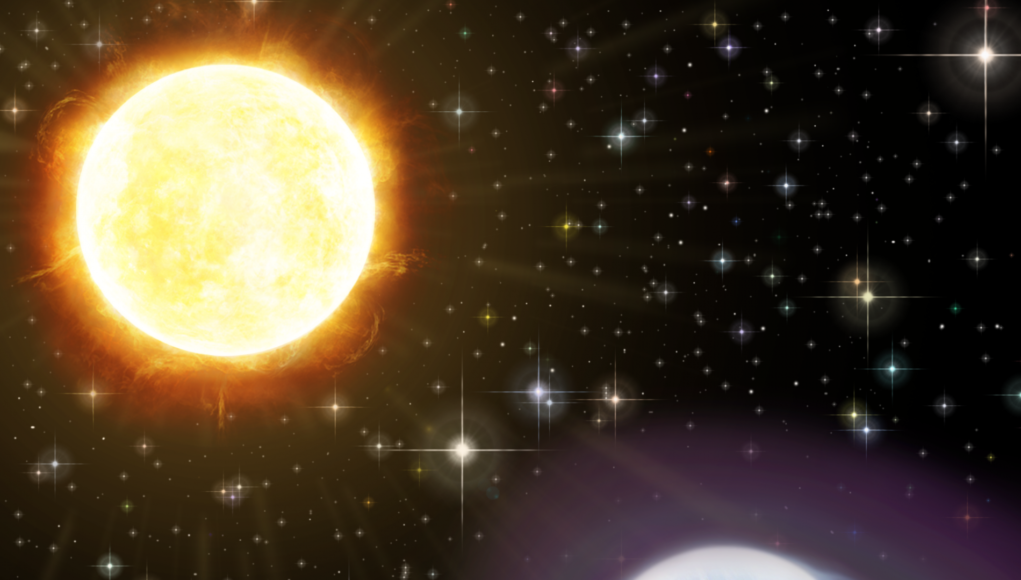A team of astronomers, led by researcher Francisco J. Pozuelos from the Institute of Astrophysics of Andalusia (IAA-CSIC), has announced the discovery of an extraordinarily light planet orbiting a distant star in our galaxy. This fascinating finding challenges our current understanding of giant and ultralight planet formation.
The planet, named WASP-193b, has captured the attention of the scientific community due to its unusually large size and extremely low density. Despite being approximately 50% larger than Jupiter, its density is only a fraction of that of the gas giant, comparable to that of cotton candy.
This discovery, published in the prestigious journal Nature Astronomy, represents a challenge to current theories of planetary formation. Astronomers are puzzled by the spongy nature of this planet and its apparent lack of significant gravitational attraction to its host star.
WASP-193b is the second lightest planet discovered to date, surpassed only by Kepler 51d, a planet of similar size to Neptune. The dimensions of the newly discovered planet, combined with its extremely low density, make WASP-193b a true rarity among the over five thousand exoplanets discovered to date.
“These extremely light giant planets are very rare to find,” says Julien de Wit, co-author of the study and assistant professor in the Department of Earth, Atmospheric, and Planetary Sciences at MIT. “This is an extreme case of a class of planets called ‘puffy’ or ‘fluffy’ Jupiters. We have known about them for fifteen years, but they remain a real mystery.”
“This planet challenges all of our current theories of planetary formation,” adds study author Francisco J. Pozuelos, astronomer at the Institute of Astrophysics of Andalusia (IAA-CSIC). “We cannot explain how this planet formed. We need detailed observations of its atmosphere to understand its evolution.”
The new planet was discovered by WASP (Wide Angle Search for Planets), an international collaboration operating two robotic observatories in both hemispheres. Each observatory employs a set of wide-field cameras to measure the brightness of thousands of individual stars across the sky.
Based on observations obtained between 2006 and 2008, and subsequently between 2011 and 2012, the WAPS-South observatory detected periodic decreases in the brightness of WASP-193, a Sun-like star located about 1200 light-years from Earth. Analysis of these periodic transits was consistent with the passage of a giant “super-Jupiter” in front of the star every 6.25 days.
To calculate the mass of the planet, as well as its density and possible composition, the team used the radial velocity method. This technique analyzes small oscillations in the star’s motion due to the attraction of a planet orbiting around it. These variations are reflected in shifts in the wavelength of the star’s spectrum. The more massive the planet, the greater the observed shift in the star’s spectrum.
In the case of WASP-193b, high-resolution spectra of the star obtained by the HARPS and CORALIE spectrographs, located at the La Silla Observatory, Chile, were analyzed. The surprise was that barely any significant changes in the radial velocity of the star were detected. “The amazing thing is that, despite its enormous size, this planet is so light that it barely exerts a detectable attraction on its star,” explains Pozuelos.
“It took us almost four years to gather all the necessary data to obtain the mass of WASP-193b,” explains Khalid Barkaoui, postdoctoral fellow at MIT, the University of Liege, and the Institute of Astrophysics of the Canary Islands, and co-leader of the study alongside Pozuelos.
“At first, the densities we obtained were so extraordinarily low that we found them hard to believe,” comments Pozuelos. “That’s why we repeated the entire data analysis process several times, using different codes and methodologies, to make sure it was the real density of the planet, no matter how unusual it seemed.”
The calculations confirm that WASP-193b has an approximate mass of 0.14 times that of Jupiter and a density of 0.059 grams per cubic centimeter, considerably lower than that of Jupiter and Earth, but similar to the 0.05 grams per cubic centimeter of cotton candy.
“The planet is so light that it’s difficult to imagine an analogous material in a solid state,” says Julien De Wit of the Massachusetts Institute of Technology. “The reason it resembles cotton candy is because both are practically air. The planet is basically super fluffy.”
According to the authors, WASP-193b may have an atmosphere predominantly composed of hydrogen and helium, several tens of thousands of kilometers more extensive than Jupiter’s atmosphere. Currently, no planetary formation model can explain a planet with an atmosphere of these proportions.
“WASP-193b is a big mystery,” concludes Pozuelos. “Of the few known ultralight planets, this is the best candidate for study by the James Webb Space Telescope and finally understanding how a planet as light as cotton candy can form.”
This discovery highlights the need to continue exploring the boundaries of our knowledge about exoplanets and their origins. WASP-193b has become a priority candidate for future research, including the detailed analysis of its atmosphere using the James Webb Space Telescope.













